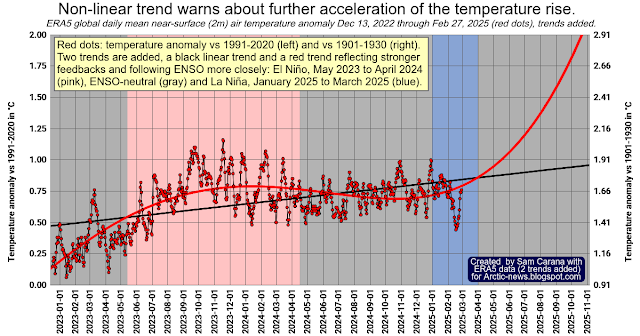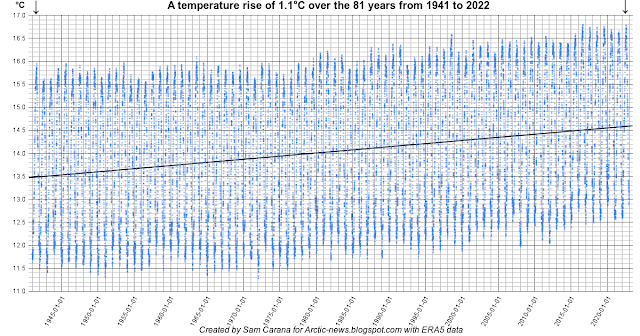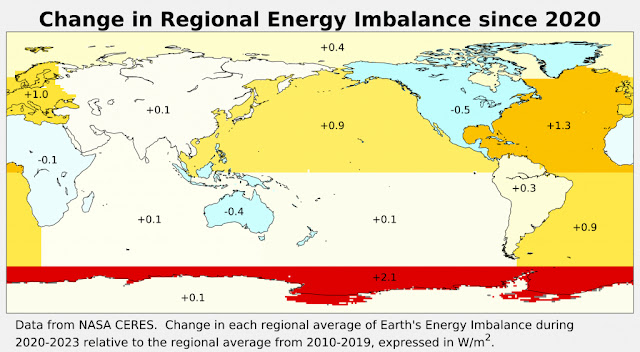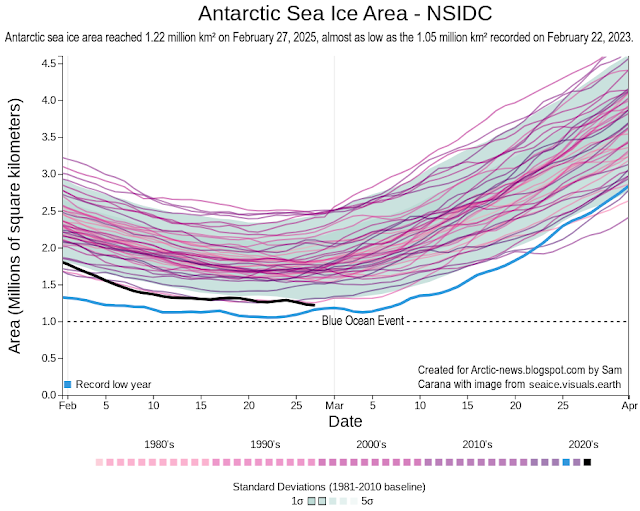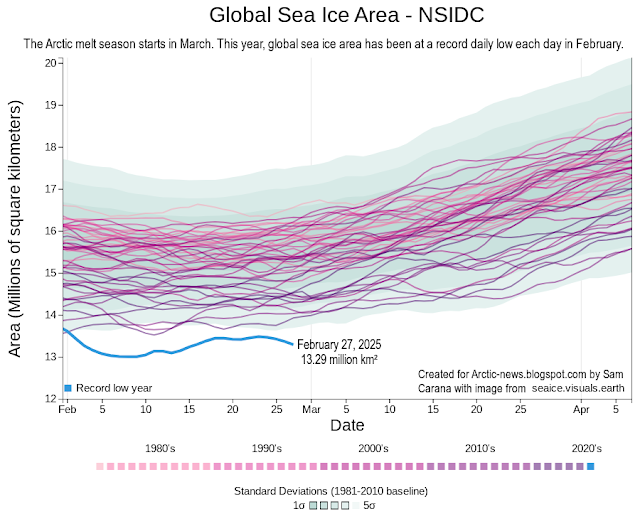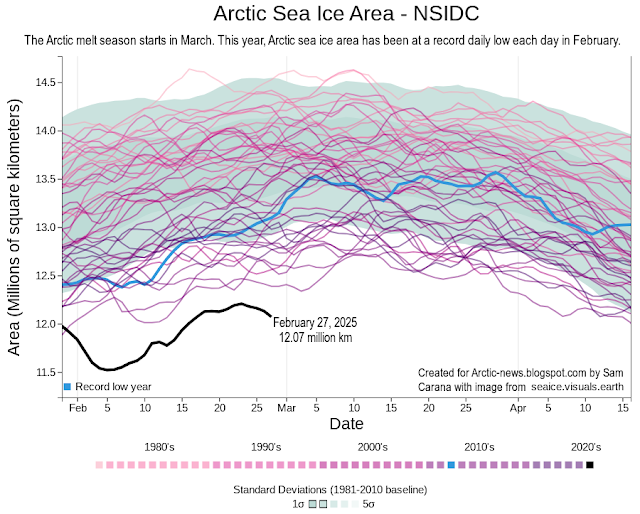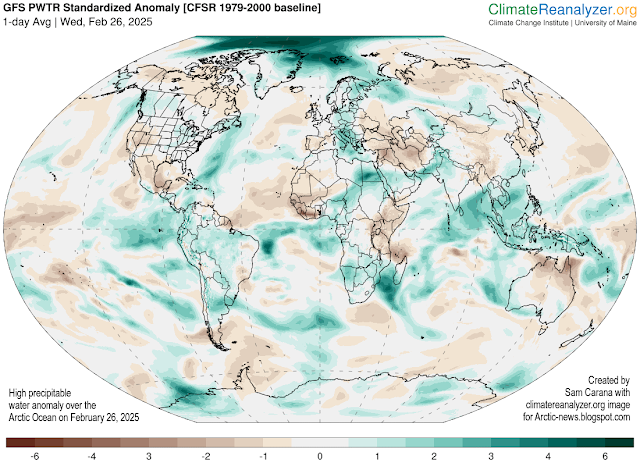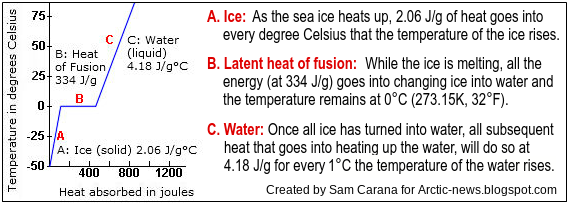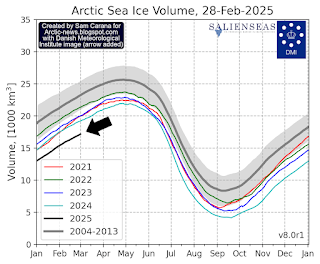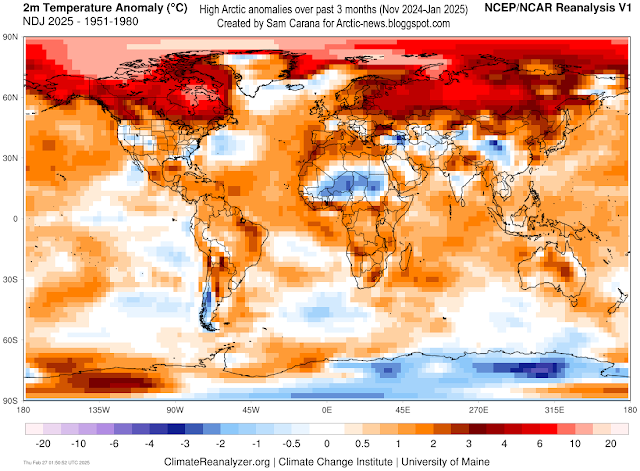This rise of 0.5°C over just 3 years (black linear trend in above image) is a much steeper rise than the black linear trend in the image below, which shows a rise of 1.1°C over the 81 years from 1941 to 2022.
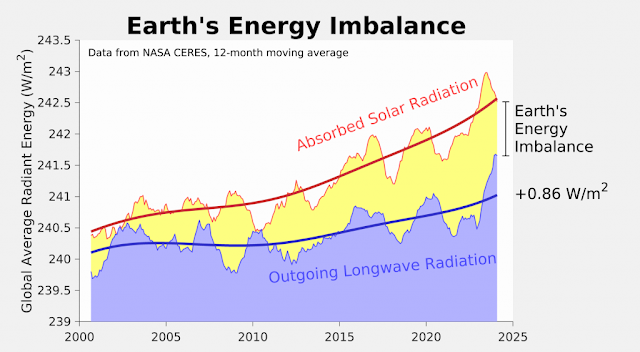 |
| [ Image from Berkeley Earth: Earth’s Energy Imbalance is accelerating the temperature rise ] |
5. Greater albedo loss – as a result of sea ice loss and loss of lower clouds
The Arctic melt season looks set to start with the lowest Arctic sea ice area on record for the time of year, as illustrated by the image below.
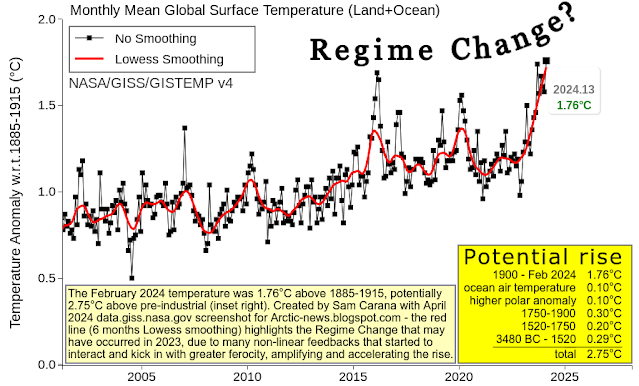 |
| [ from an earlier post ] |
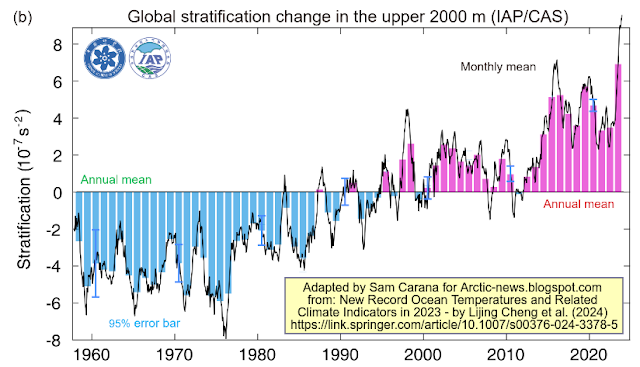 |
| [ from earlier post ] |
The amount of energy absorbed by melting ice is as much as it takes to heat an equivalent mass of water from zero to 80°C. The energy required to melt a volume of ice can raise the temperature of the same volume of rock by as much as 150ºC.
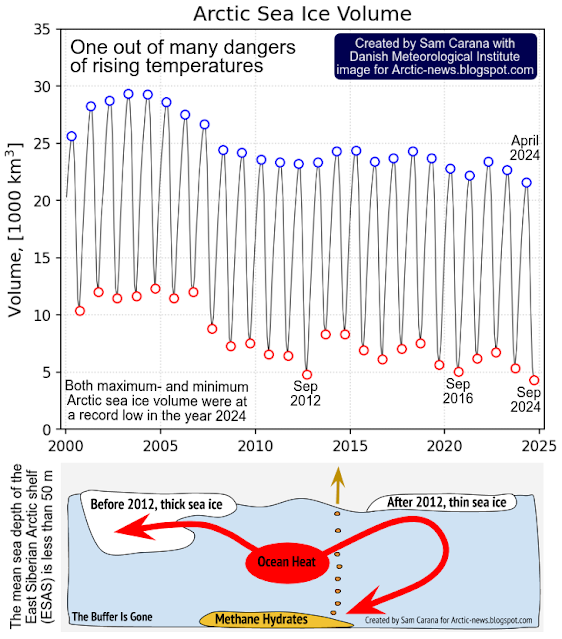 |
| [ from earlier post ] |
The image on the right shows Arctic sea ice volume up to February 27, 2025. Arctic sea ice volume in 2024 and 2025 has been much lower than in previous years.
More incoming heat therefore threatens to reach the seafloor of the Arctic Ocean and destabilize methane hydrates contained in sediments at the seafloor, resulting in eruptions of huge amounts of methane, in turn threatening increased loss of permafrost, resulting in additional emissions.
The danger is especially large in the Arctic, which contains huge amounts of methane and which is hit most strongly by the temperature rise, as illustrated by the image below.
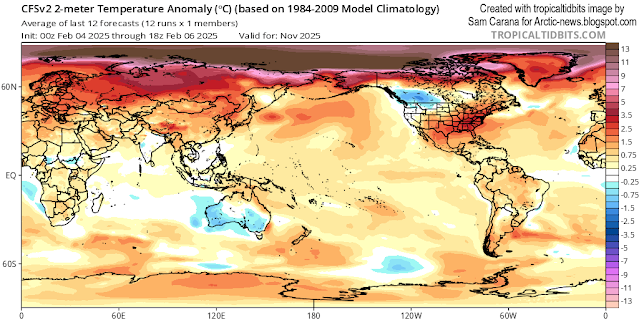 |
| [ Very high temperature anomalies forecast over Arctic Ocean, from earlier post ] |
The situation is dire and the precautionary principle calls for rapid, comprehensive and effective action to reduce the damage and to improve the situation, as described in this 2022 post, where needed in combination with a Climate Emergency Declaration, as discussed at this group.
• Copernicus
https://climate.copernicus.eu
• Did a Terminal Temperature Acceleration Event start in December 2024?
• Did the climate experience a Regime Change in 2023?
• Sea ice loss
https://arctic-news.blogspot.com/2025/02/sea-ice-loss.html
• Kevin Pluck – seaice.visuals.earth
https://seaice.visuals.earth
• Sunspots
https://arctic-news.blogspot.com/p/sunspots.html
• Albedo, latent heat, insolation and more
https://arctic-news.blogspot.com/p/albedo.html
• Pre-industrial
https://arctic-news.blogspot.com/p/pre-industrial.html
• Extinction
https://arctic-news.blogspot.com/p/extinction.html
• Cold freshwater lid on North Atlantic
https://arctic-news.blogspot.com/p/cold-freshwater-lid-on-north-atlantic.html
https://arctic-news.blogspot.com/2017/01/arctic-ocean-feedbacks.html
https://www.pnas.org/doi/10.1073/pnas.2411835122
https://www.facebook.com/groups/arcticnews/posts/10162337919869679
• Danish Meteorological Institute – Arctic sea ice volume and thickness
https://ocean.dmi.dk/arctic/icethickness/thk.uk.php
• Arctic and Antarctic Data Archive System (ADS) of the National Institute of Polar Research of Japan
https://ads.nipr.ac.jp
• Climate Reanalyzer
https://climatereanalyzer.org
• Forest fires push up greenhouse gas emissions from war in Ukraine
• Climate damage caused by Russia’s war in Ukraine in three years – the key numbers
• Tropical Tidbits
https://www.tropicaltidbits.com
• Transforming Society
https://arctic-news.blogspot.com/2022/10/transforming-society.html
• Climate Plan
https://arctic-news.blogspot.com/p/climateplan.html
• Climate Emergency Declaration
https://arctic-news.blogspot.com/p/climate-emergency-declaration.html

